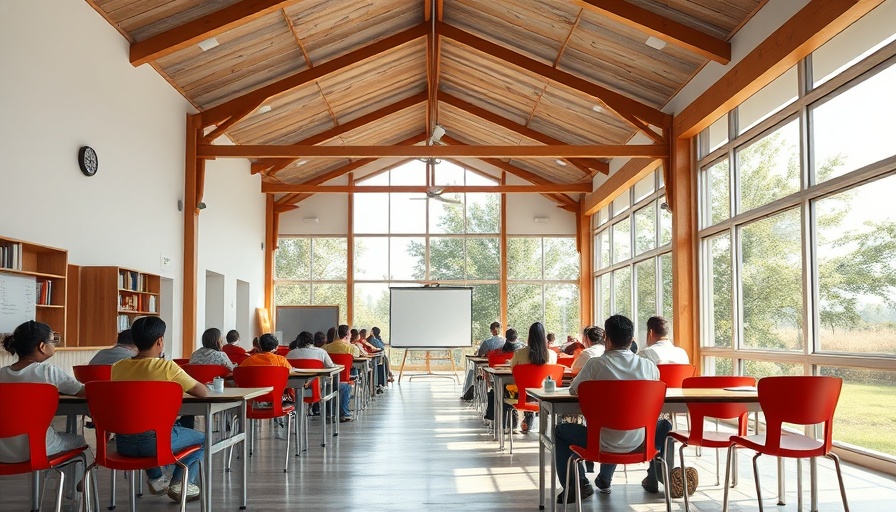
The Shift to Indoor/Outdoor Learning Spaces
In recent years, educators and architects alike have recognized the profound benefits of integrating outdoor and indoor learning environments. Architect Elizabeth Stoel, a leader in educational design, argues that a seamless connection between these spaces can significantly enhance the learning experience for students. By breaking away from conventional classroom formats, schools equipped with operable partitions and easy access to outdoor areas allow students to engage in hands-on learning while connecting with nature.
Understanding Why Outdoor Learning Matters
According to Stoel, the shift towards indoor/outdoor classrooms emerges from an evolving awareness of children's developmental needs. Outdoor learning not only combats the effects of the pandemic-induced isolation but also fights against rising youth mental health concerns. Engaging with nature has comforting effects that can reduce anxiety and improve focus, allowing for what Stoel describes as “skill-building, problem-solving, collaboration, and communication.” These are essential capabilities for the modern learner.
The Holistic Benefits of Outdoor Classrooms
Reference studies from organizations like OutClass™ reveal the transformative potential of outdoor classrooms. Research indicates that these spaces don’t just foster academic success; they also encourage environmental stewardship and promote physical and mental well-being. Outdoor classrooms provide the physical space needed for movement and play—critical components for holistic child development. They enrich literary and scientific curricula by offering students direct experiences with nature, encouraging curiosity, empathy, and responsibility towards the environment.
Why Should Schools Prioritize Outdoor Spaces?
As noted in various studies, outdoor classrooms can improve not only student engagement but teacher wellness as well. Working in outdoor settings has been shown to reduce stress levels among educators and create a more stimulating teaching environment. Schools can utilize community involvement effectively by transforming ordinary school grounds into rich, engaging learning environments. This approach brings together local organizations, parents, and students, enhancing the educational experience through collaborative efforts.
Taking Action with Outdoor Learning
The COVID-19 pandemic has forced educators to rethink teaching approaches, advocating for outdoor learning as a long-term solution. Schools across the United States have begun to implement this strategy, with successful projects popping up in places like Portland, Maine. They turned accessible outdoor areas into functional classrooms, demonstrating that outdoor learning can thrive in various environments, even challenging climates. By spreading awareness and investing in outdoor spaces, we can create a more equitable and enriching learning experience for all students.
In conclusion, the move towards indoor/outdoor educational spaces is crucial for promoting wellness and supporting student success. Schools looking to integrate outdoor learning should consider the wealth of benefits supported by research and expert insight. This holistic approach not only addresses academic goals but also nurtures the mental and emotional health of students in a post-pandemic world. By prioritizing such innovative designs, educators can equip students with the skills and resilience needed for a brighter future.
 Add Row
Add Row  Add
Add 


 Add Row
Add Row  Add
Add 

Write A Comment